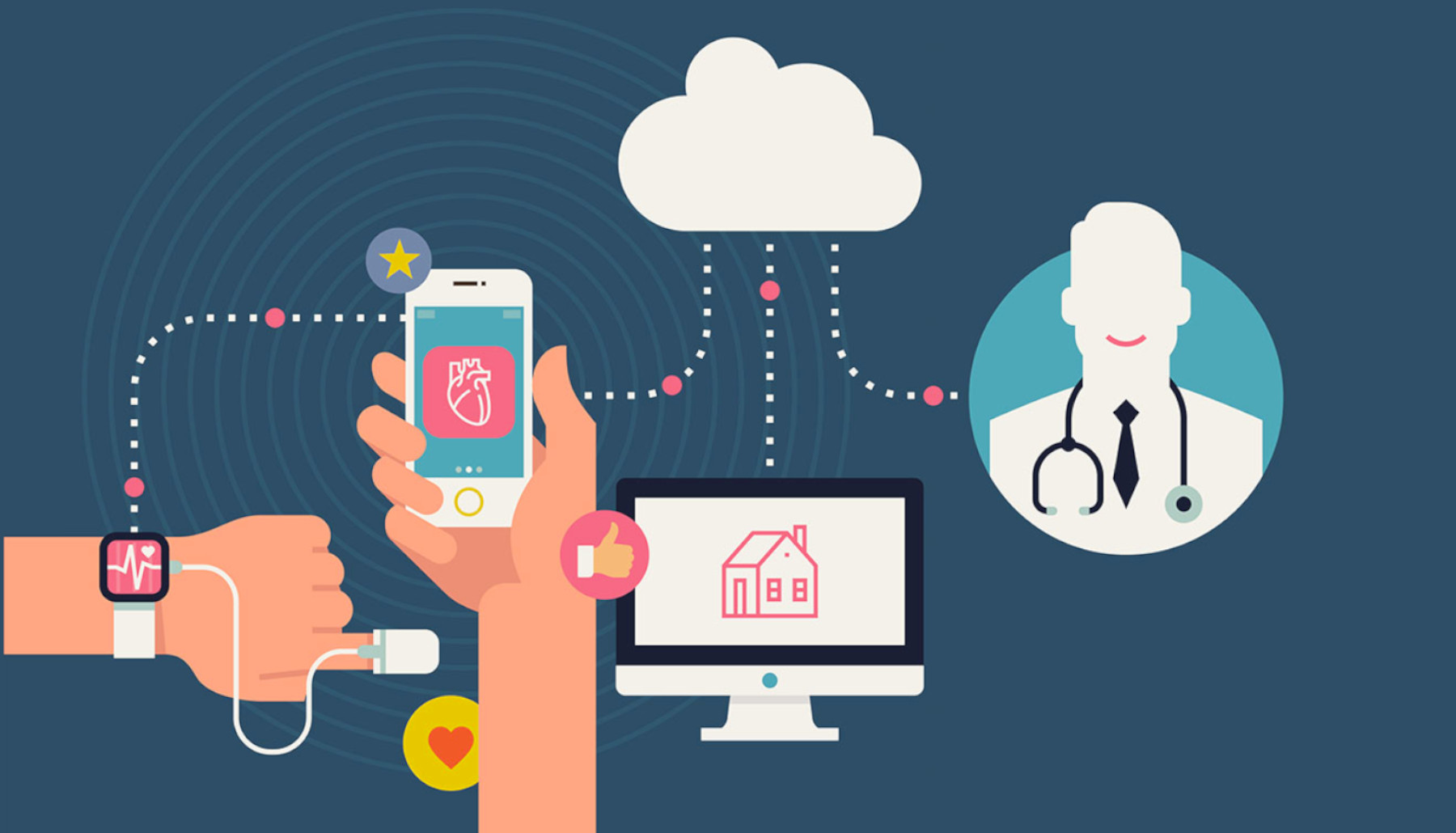What is IoT?
Internet of Things (IoT) is defined as an ecosystem of physical things that are connected to the internet. The ‘thing’ in IoT can be any object that has been assigned an IP address and has the ability to transfer and collect data over a network.The 4 Processes of IoT in Healthcare:
Below are 4 processes of how healthcare professionals use IoT to capture data, process it and gain insights.
Data Collection:
Interconnected devices are deployed and they collect data. These devices can include monitors, camera systems, sensors, actuators, and detectors.
Data Conversion:
Data is received in analog form and converted to digital form for further processing the data.
Data Storage:
Digitized data is now transferred to the cloud or data center.
Data Analysis:
Final data is managed and analyzed. Advanced analytics is used on this data to bring healthcare organizations insights for effective decision-making.
- IoT in the healthcare market will be worth $534.3 Billion By 2025.
- 60% of healthcare organizations have integrated IoT devices in their facilities.
- 73% of healthcare organizations are using IoT for maintenance and monitoring
- 87% of healthcare organizations plan to implement IoT technology this year
Benefits of IoT in Healthcare:
- Cost Reduction: Patient monitoring in real time significantly cuts down doctor visits, hospital re-admissions and stays.
- Improved Treatment: Healthcare professionals can make evidence-based informed decisions and provide effective treatment solutions.
- Faster Disease Diagnosis: Diseases can be diagnosed at an early stage with the help of continuous patient monitoring and real-time data.
- Medicine & Equipment Management: Connected devices help manage drugs and equipment efficiently with reduced costs.
- Error Reduction: Reduce the chances of errors and ensure smooth healthcare operations with the help of data generated through IoT devices.
The 4 Processes of IoT in Healthcare:
IoT for Physicians
Physicians can keep a track of the patient’s health more effectively with the help of home monitoring equipment and wearables. Healthcare professionals can use the data collected from devices and recommend the most effective treatments for patients.
IoT for Hospitals
IoT devices with sensors is used by hospitals to track real-time locations of medical equipment. Medical staff deployment can also be monitored in real-time. Hospitals can easily manage medicines, monitor the environment, and control temperature.
IoT for Health Insurance Companies
Insurance companies can use the data captured through health monitoring devices for their claim operations. They can easily detect fraud claims. IoT devices are encouraging transparency between customers and insurers in claim handling, risk assessment, underwriting, and pricing.
Examples of IoT in Healthcare:
- An IoT driven software known as AutoBed tracks occupancy among 1,200 units and factors in 15 different metrics to assess the needs of each patient.
- A remote health monitoring system known as Telehealth eliminates the need for patients to visit the doctor.
- eAlert virtually monitors medical hardware and alerts hospital staff members before a problem arises
- A Bluetooth-enabled coagulation system launched by Roche allows patients to check how quickly their blood clots.
- A wearable smart asthma monitor known as ADAMM detects the symptoms of an asthma attack before its onset. This allows the patient to take the necessary actions before the attack.
The huge data generated by connected devices are already ensuring better care, reduced costs for patients, improved patient experience and efficient workflow for healthcare professionals. The implementation of IoT in healthcare organizations will continue to open up immense opportunities and holds the power to transform healthcare.




